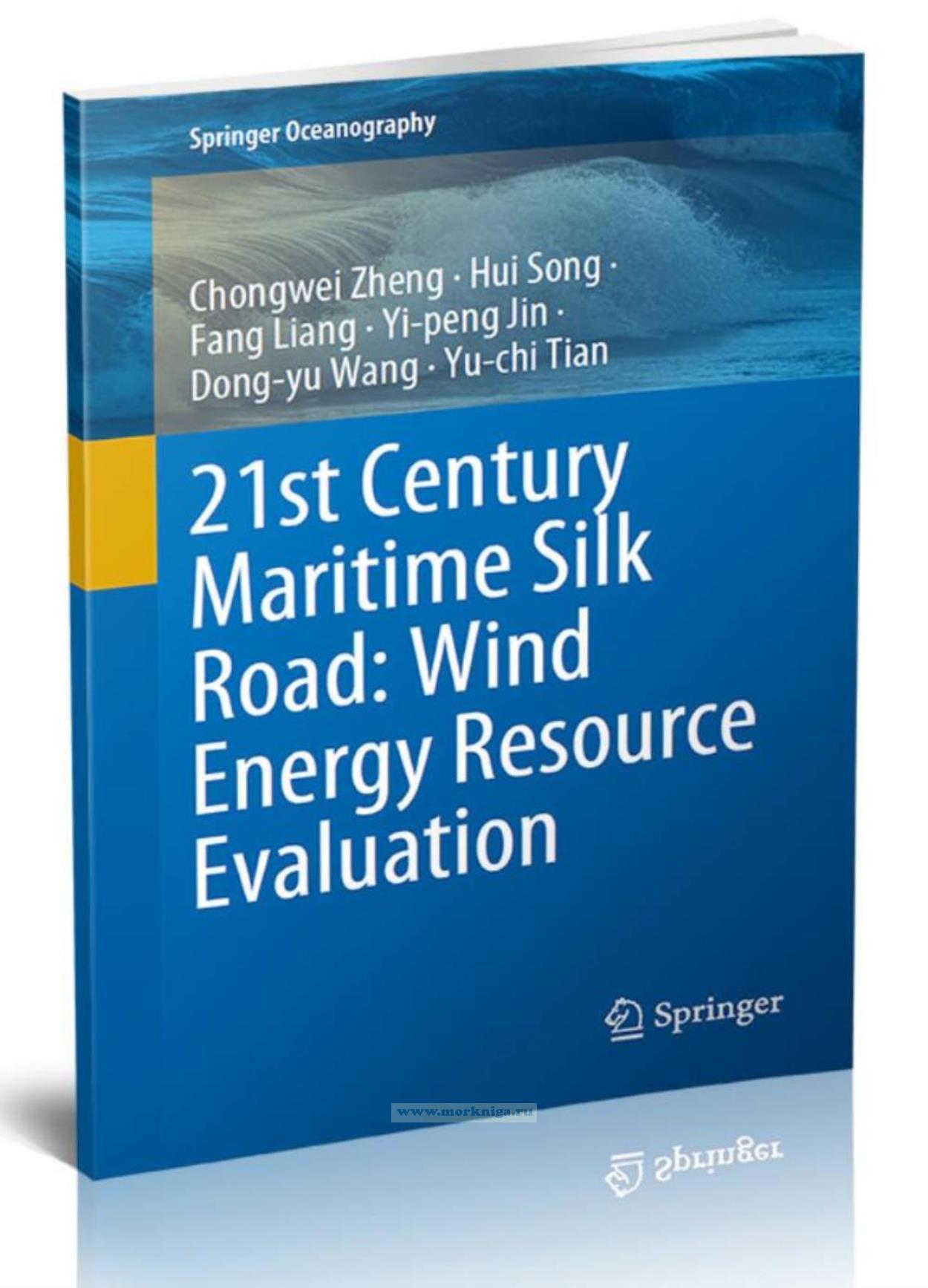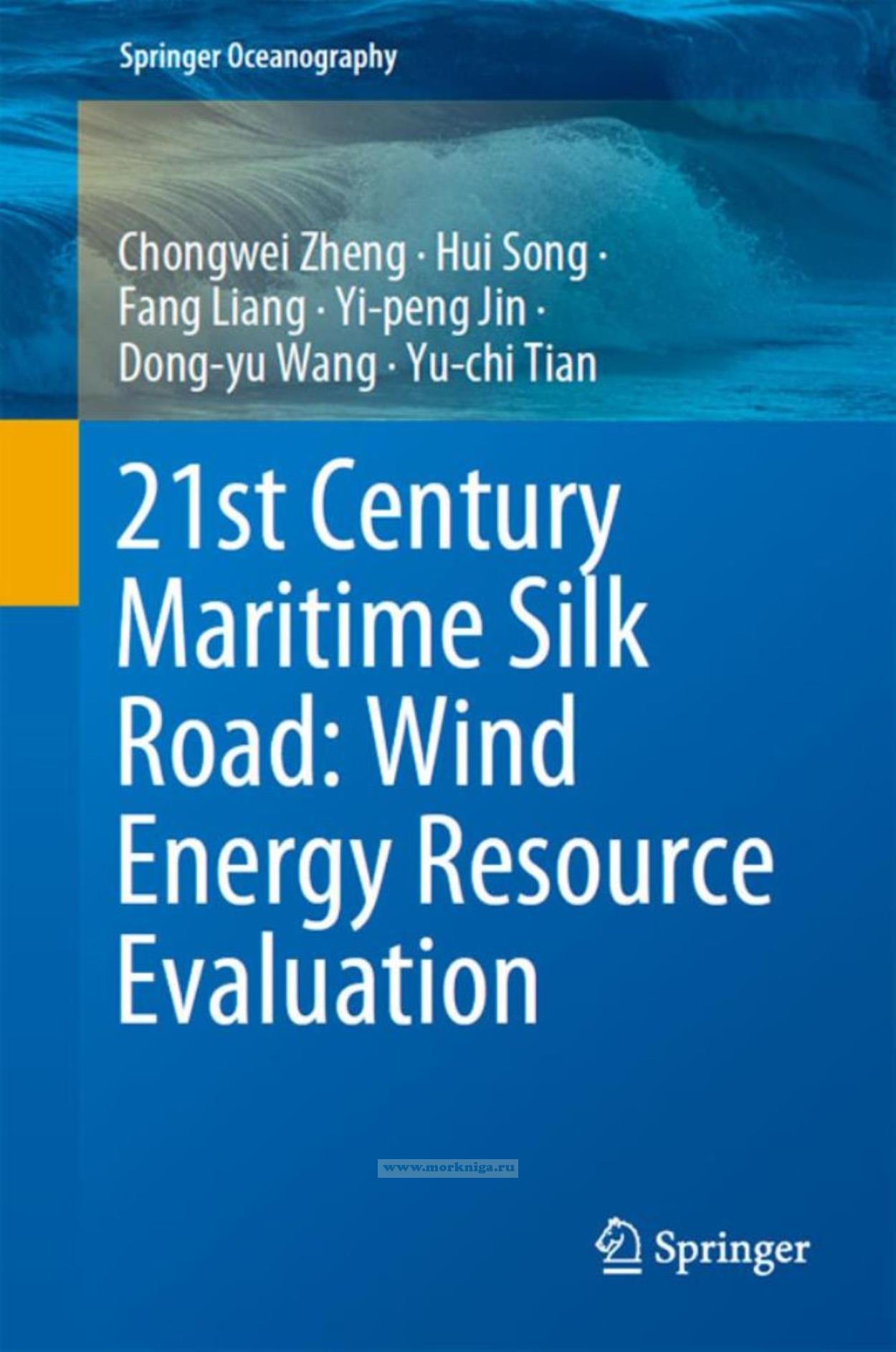21st Century Maritime Silk Road: Wind Energy Resource Evaluation/Морской Шелковый путь 21 века: оценка ресурсов ветроэнергетики
Книга на английском языке.
Presents advantages and disadvantages of offshore wind energy, especially the advantages in the deep sea and remote islands construction. Discusses the research status and difficulties of wind energy evaluation. Analyzes the temporal-spatial distribution of offshore wind energy of the Maritime Silk Road for the first time. Presents the long-term climatic trend and mechanism of offshore wind energy of the Maritime Silk Road for the first time. Provides short-term and long-term prediction of wind energy of the Maritime Silk Road for the first time. Focuses on the offshore wind energy of the remote islands and reefs and takes Sri Lanka as a case study for the first time.
Contents
1 Introduction
1.1 Advantages of Offshore Wind Energy
1.2 Disadvantages of Offshore Wind Energy
1.3 Frame Structure of This Book
References
2 Research Status, Difficulties and Countermeasures of Offshore Wind Energy Evaluation of the Maritime Silk Road
2.1 Researches on Wind Power of the South China Sea
2.2 Researches on Wind Power of the Northern Indian Ocean
2.3 Challenges and Resolutions
2.3.1 Detail Investigation on Climate Features of Wind Energy
2.3.2 Mapping of Macro–micro Scale Classification oWind Power
2.3.3 Relationship Between Wind Power and Important Factors
2.3.4 Short-Term Wind Power Forecasts
2.3.5 Long-Term Variation of Wind Power
2.3.6 Mid- and Long-Term Projection of Wind Power
2.3.7 Wind Power Evaluation on the Key Nodes
2.3.8 Construction of Wave Energy Resource Dataset
References
3 Climatic Temporal-Spatial Distribution of Offshore Wind Energy in the Maritime Silk Road
3.1 Data and Methods
3.1.1 Data
3.1.2 Method
3.2 Wind Power Density
3.3 Availability of Wind Energy
3.4 Energy Level Occurrences
3.4.1 Occurrences Wind Power Density Above 100 W/m2
3.4.2 Occurrences Wind Power Density Above 150 W/m2
3.4.3 Occurrences Wind Power Density Above 200 W/m2
3.4.4 Occurrences Wind Power Density Above 300 W/m2
3.4.5 Occurrences Wind Power Density Above 400 W/m2
3.5 Energy Stability
3.6 Monthly/seasonal Variability
3.7 Energy Storage
3.8 Summary
References
4 Climatic Trend of Offshore Wind Energy in the Maritime Silk Road
4.1 Data and Methods
4.2 Trend in Wind Power Density
4.3 Trend in Effective Wind Speed Occurrence
4.4 Trends in Energy Level Occurrences
4.5 Trend in Energy Stability
4.6 Summary
References
5 An All-Elements Short-Term Forecasting of Offshore Wind Energy Resource
5.1 Methods
5.2 Case Study One
5.2.1 Wind Field Forecast
5.2.2 Wind Power Density Forecast
5.2.3 Availability Forecast
5.2.4 Energy Level Occurrences Forecast
5.2.5 Energy Storage Forecast
5.2.6 Forecast of Key Point
5.3 Case Study Two
5.3.1 Wind Field Forecast
5.3.2 Wind Power Density Forecast
5.3.3 Availability Forecast
5.3.4 Energy Level Occurrence Forecast
5.3.5 Energy Storage Forecast
5.3.6 Forecast of Key Point
5.4 Summary
References
6 An All-Elements Long-Term Projection of Offshore Wind Energy in the Maritime Silk Road
6.1 Data and Methods
6.1.1 Data
6.1.2 Method
6.2 Seasonal Characteristics of Wind Energy Density
6.3 Availability of Wind Energy
6.4 Energy Level Occurrences
6.5 Energy Stability
6.6 Monthly/seasonal Variation of Energy
6.7 Summary
6.8 Prospect
References
7 OffshoreWind Energy Evaluation in the Sri Lankan Waters
7.1 Data and Methods
7.1.1 Data Introduction
7.1.2 Method Introduction
7.2 Temporal-Spatial Distribution of Offshore Wind Energy for the Next 40 years
7.2.1 Wind Power Density
7.2.2 Energy Availability
7.2.3 Energy Richness
7.2.4 Energy Direction
7.2.5 Energy Stability
7.3 Future Trend inWind Energy
7.4 Summary and Prospect
References
8 Construction of Temporal-Spatial Characteristics Dataset of Offshore Wind Energy Resource
8.1 Data and Methods
8.2 Calculation Methods of Parameters
8.3 Value and Significance
8.4 Usage Notes and Recommendations
8.5 Prospect
References

